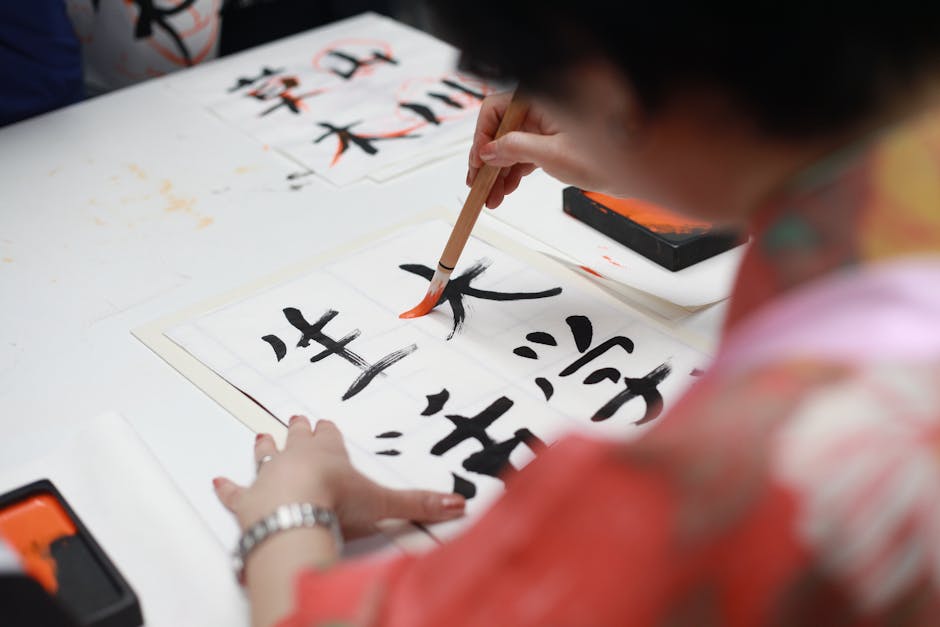Learn Japanese for Kids: 10 Basic Words for Beginners!

Learn Japanese for Kids: 10 Basic Words for Beginners!
Konnichiwa, curious minds! Welcome to a delightful journey into the world of Japanese, perfectly sized for our little adventurers! As someone deeply inspired by the elegance and thoughtfulness embedded in Japanese culture, I'm thrilled to share a simple yet engaging way to introduce children to this beautiful language. We'll explore 10 basic words, sprinkled with a touch of Japanese design philosophy - finding beauty in simplicity and appreciating the details. Let's dive in!
Why Japanese for Kids? More Than Just Words!
Learning a new language, especially one as unique as Japanese, offers a wealth of benefits for young learners. It's not just about vocabulary; it's about opening a window to a different culture, fostering cognitive development, and sparking a lifelong love of learning. Japanese, with its intricate writing system and polite nuances, presents a particularly enriching experience.
Think of it like this: learning Japanese is like exploring a meticulously designed Japanese garden. Each element, from the placement of the stones to the carefully pruned trees, contributes to a harmonious and beautiful whole. Similarly, learning Japanese exposes children to a different way of thinking, a different perspective on the world, and a different way of expressing themselves.
Here are some key advantages:
a. Cognitive Boost: Studies show that learning a second language improves problem-solving skills, enhances memory, and boosts overall cognitive function. Japanese, with its unique writing systems (Hiragana, Katakana, and Kanji), presents a delightful challenge for young minds.
b. Cultural Awareness: Exposure to Japanese culture fosters empathy, understanding, and appreciation for diversity. Children learn about Japanese customs, traditions, and values, broadening their worldview. Imagine the stories they'll tell after learning about origami or the tea ceremony!
c. Enhanced Communication Skills: Learning Japanese encourages children to communicate in different ways, adapting to the nuances of the language. This improves their overall communication skills and builds confidence.
d. Future Opportunities: In an increasingly globalized world, multilingualism is a valuable asset. Knowing Japanese can open doors to exciting opportunities in various fields, from technology and business to arts and culture.
e. Creativity and Imagination: Immersing themselves in a new language ignites creativity and imagination. Children can explore Japanese folktales, anime, and manga, sparking their own creative pursuits.
10 Basic Japanese Words for Beginners (Kids Edition!)

Okay, are you ready to begin? We will start with ten essential words. I've chosen words that are common in everyday conversations and easy for children to grasp. I've also tried to incorporate words that reflect the gentle and considerate spirit often found in Japanese interactions.
1. Konnichiwa (こんにちは): Hello!
This is your go-to greeting for daytime. It's polite and friendly, perfect for meeting new people. Imagine saying "Konnichiwa" to a friendly neighbor or a new friend at school! The beauty of "Konnichiwa" lies in its simplicity and warmth. It's like the welcoming entrance to a beautifully designed home.
2. Arigato (ありがとう): Thank you!
Showing gratitude is a fundamental aspect of Japanese culture. "Arigato" is a simple yet powerful expression of appreciation. Encourage children to use it frequently. Think about the joy of receiving a gift and saying "Arigato" with a genuine smile. "Arigato" is like a small, perfectly wrapped gift of appreciation.
3. Hai (はい): Yes!
"Hai" is a straightforward and essential word. It's used to express agreement or affirmation. It's a simple word with a direct impact. Imagine someone asking, "Do you want to play?" and responding with an enthusiastic "Hai!". "Hai" is like a clean, minimalist design - functional and elegant.
4. Iie (いいえ): No!
Just as important as "Hai," "Iie" allows children to express disagreement or decline an offer politely. It's important to teach children how to say "no" respectfully. It's about setting boundaries with kindness. "Iie" is like a carefully placed negative space in a design, adding balance and clarity.
5. Onegai shimasu (お願いします): Please!
Adding "Onegai shimasu" to a request makes it more polite and considerate. It shows respect and encourages cooperation. "Can I have that toy, onegai shimasu?" It adds a touch of elegance to a simple request. "Onegai shimasu" is like adding a delicate brushstroke to a painting, enhancing its beauty.
6. Wakarimasu ka? (分かりますか?): Do you understand?
This phrase is helpful for checking comprehension and ensuring clear communication. It's a kind way to make sure everyone is on the same page. Learning isn't about perfection, it's about continuous growth. Using it to ask a kid "wakarimasu ka?" after they attempt to speak in Japanese is encouraging. "Wakarimasu ka?" is like a well-placed question mark, inviting further exploration and understanding.
7. Oyasumi nasai (おやすみなさい): Good night!
A gentle and peaceful way to say goodnight. It's often said before going to bed. Imagine whispering "Oyasumi nasai" to your little ones as you tuck them in. It's a comforting and loving expression. "Oyasumi nasai" is like a soft, calming color palette, creating a serene and peaceful atmosphere.
8. Sayonara (さようなら): Goodbye!
A more formal way to say goodbye, typically used when you don't expect to see someone for a while. It's not quite as common as some of the other greetings, but it's good to know. It's a farewell with a sense of finality. "Sayonara" is like the closing chapter of a beautiful story, leaving a lasting impression.
9. Neko (猫): Cat
Kids love animals! "Neko" is a fun and easy word to learn. Learning about new cultures by way of learning animals is a creative method. Imagine playing with a furry friend and calling it "Neko." It's a connection to a different culture through a shared love of animals. "Neko" is like a playful and whimsical illustration, adding a touch of joy to the learning experience.
10. Inu (犬): Dog
Another popular animal, "Inu" is a great addition to any child's vocabulary. Just like "neko," it's a quick and fun word to get the ball rolling. From the simple pleasure of teaching a young one to call a dog in "inu," that could be the spark that kicks off a long-term interest in Japanese. "Inu" is like a loyal and dependable symbol, representing friendship and companionship.
Making Japanese Learning Fun and Engaging for Kids!

Learning should be an enjoyable experience, especially for children. Here are some tips to make learning Japanese fun and engaging:
a. Games and Activities: Incorporate games like "I Spy" with Japanese words, flashcard matching, or simple role-playing scenarios. The goal is to remove the stress of memorizing, but to instead passively absorb the words by way of a memory attached to a delightful activity.
b. Visual Aids: Use colorful flashcards, picture books, and videos to illustrate the meaning of words. Visual aids are a powerful tool for young learners. A picture that pairs with a Japanese word can go a long way in solidifying the memory.
c. Songs and Rhymes: Introduce Japanese children's songs and rhymes. Music is a fantastic way to learn pronunciation and vocabulary.
d. Storytelling: Read Japanese folktales or create your own stories using the new vocabulary.
e. Cultural Immersion: Introduce children to Japanese culture through food, art, and traditions. Consider making simple origami or trying a traditional Japanese snack.
f. Anime and Manga: While moderation is key, age-appropriate anime and manga can be a fun way to expose children to the language and culture. However, make sure that any exposure to Japanese media is appropriate for the child's age.
g. Repetition and Reinforcement: Regularly review the vocabulary through games, conversations, and activities. Consistency is key to long-term retention.
h. Positive Reinforcement: Praise and encourage children's efforts, focusing on their progress rather than perfection. This will help them build confidence and stay motivated. A simple "Well done!" will add to the joy of the experience.
i. Make it a Family Affair: Learn alongside your children! This creates a shared experience and provides opportunities for practice. It also demonstrates your own enthusiasm for learning.
j. Online Resources: Utilize online resources like websites, apps, and YouTube channels that offer interactive Japanese lessons for kids. A quick Google search of "Japanese for kids" will show you a multitude of options.
Integrating Japanese Design Principles into Learning

As a style-japanese enthusiast, I believe in incorporating Japanese design principles into everyday life, even into language learning! Here's how you can infuse a bit of Japanese aesthetics into your child's learning journey:
a. Simplicity (Kanso): Focus on the essential elements, avoiding clutter and distractions. Use clean, uncluttered flashcards and learning materials.
b. Naturalness (Shizen): Embrace natural materials and colors. Use wooden toys, paper crafts, and nature-inspired visuals.
c. Asymmetry (Fukinsei): Embrace asymmetry and imperfection. Don't strive for perfect pronunciation or grammar initially. Focus on communication and expression. The core of "Fukinsei" is the belief that asymmetry is far more interesting than symmetry. So don't fret too much!
d. Tranquility (Seijaku): Create a calm and peaceful learning environment. Minimize noise and distractions to promote focus and concentration.
e. Appreciation of Impermanence (Wabi-Sabi): Embrace the beauty of imperfection and the transient nature of things. Learning is a journey, not a destination. Making mistakes is part of the process.
Beyond the Basics: Expanding Your Child's Japanese Vocabulary

Once your child has mastered these 10 basic words, you can gradually expand their vocabulary with related terms and concepts. Here are some ideas:
a. Numbers (Ichi, Ni, San...): Introduce the numbers from one to ten. This is a practical and useful skill.
b. Colors (Aka, Ao, Kiiro...): Learn the names of different colors. This adds vibrancy to their vocabulary.
c. Animals (Usagi, Tori, Sakana...): Expand their animal vocabulary beyond cats and dogs.
d. Foods (Gohan, Pan, Kudamono...): Learn the names of common foods. This can be especially fun when trying Japanese cuisine.
e. Greetings and Polite Phrases: Teach more advanced greetings like "Ohayo gozaimasu" (Good morning) and "Sumimasen" (Excuse me).
The Joy of Discovery

Introducing Japanese to children is more than just teaching them words; it's about sparking their curiosity, broadening their horizons, and fostering a lifelong love of learning. By incorporating fun activities, cultural immersion, and design principles, you can create a truly enriching experience for your little ones. So, grab your flashcards, put on some Japanese music, and embark on this exciting adventure together! Who knows, you might even learn a few things yourself!
Remember, the journey of a thousand miles begins with a single step (or in this case, a single "Konnichiwa!"). Ganbatte (do your best)!
Post a Comment